Estimated reading time: 5 minutes
It is the question safari guides across Africa dread the most: 'Will we see a leopard?' The answer is tricky because although Panthera pardus is found from the lush Cape Winelands in the south to the rolling hills of northern Kenya, the leopard's mastery of camouflage and stealth makes it extremely elusive.
That in part is what makes a leopard sighting so sought after; the other is simply their utter beauty. A leopard’s magnificent coat has beguiled us for millennia, its rosettes are still in fashion from Paris to Zululand. Leopards radiate a muscular feline grace and move like liquid gold - seeing one of these magnificent creatures wild and free in their natural environment transforms a game drive into a lifelong memory.
Which brings us back to whether you will see one - or not. Cosmopolitan in their choice of habitat, leopards are part of the Big 5 club and many parks and reserves promote themselves as home to the full complement. Needless to say, the leopard often proves the hardest to find. For the very best chances of seeing them, you need to be in prime habitat where concentrations are greatest. It also helps if you are somewhere where guides can take their vehicle off road and take you on spot-lit night drives.
Ultimately, a leopard sighting, especially a good one, is usually about luck. But you can shorten the odds considerably at these places.
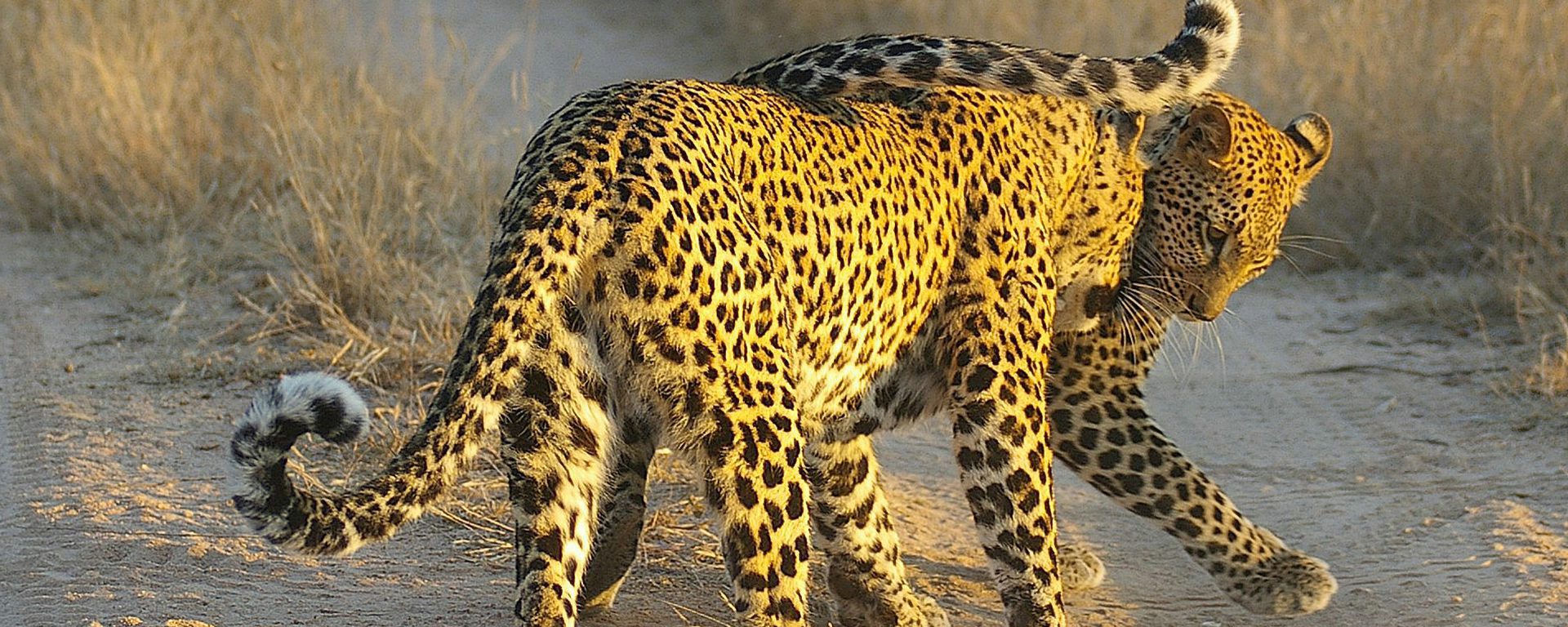
1. Londolozi – Kruger National Park
If you simply have to see a leopard then go to the place where their populations are the densest in Africa – and that means the Sabi Sands, a collection of exclusive-use private reserves on the Kruger National Park‘s western boundary. And if you have to choose one place, let it be Londolozi.
For decades, Londolozi has had an intimate relationship with leopards. Set around the Sand River, the reserve creaks at the seams with leopard-size prey (impalas, warthog piglets, bushbuck and inattentive monkeys) and offers a habitat so perfect for leopards it is almost as if the cats designed it themselves. The tangled riverside vegetation makes ambushes easy while thick-limbed trees provide somewhere safe to snooze. Londolozi’s guides are allowed to take their 4X4s off-road and use spotlights at night to ensure every opportunity to catch a sighting. When the cats are seen, their casual nonchalance towards excitable, camera-waving humans is legendary – they simply ignore us.
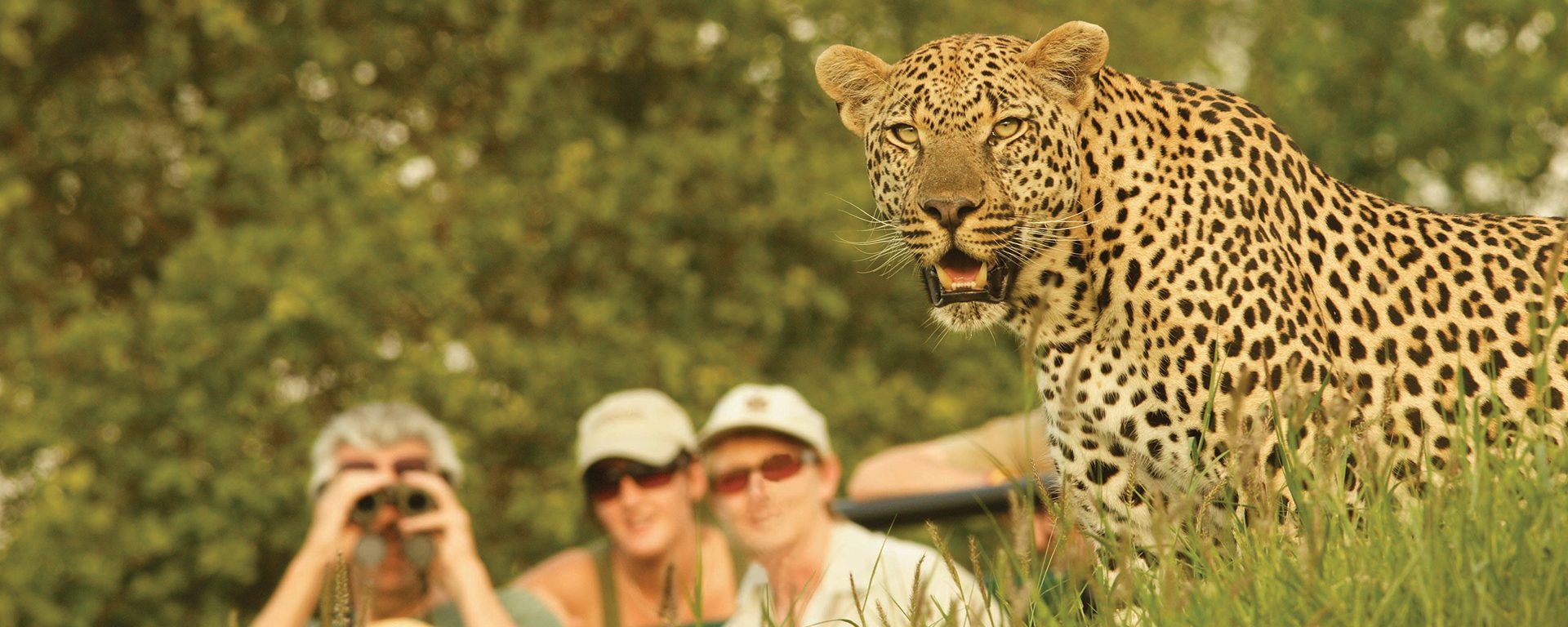
2. Moremi Game Reserve – Botswana
I saw my first leopard at Moremi. A photograph of her sits above me as I write this. Gliding out of the forest and posing momentarily in front of the Land Rover like a dog-show winner, she threw us a haughty, amber-eyed look and melted away into the grass. I still remember the goosebumps.
Moremi protects much of the Okavango Delta, Botswana’s wildlife showpiece. The temptation is to head as deep as possible into the Delta but you are far more likely to see leopards on its fringes. And eastern Moremi is where the Delta runs out of steam. Lazy water collects in shallow lagoons and fills grassy floodplains; tall forests and thick bushes dominate drier ground. Antelope, birds, monkeys and rodents honk, whistle and squeak from every corner. Perfect leopard country.
How to do it: choose a lodge that focuses on game drives rather than boat-based activities. It does not matter if you stay in the reserve itself or one of its adjoining private concessions. In fact, the latter are nominally superior as they permit off-road driving and night drives. Camp Moremi lies at the heart of the unpronounceable but achingly beautiful Xakanaxa area, famous for its leopards while Chief’s Camp sits on the Delta’s largest island, also known rather tellingly as Predator Central.
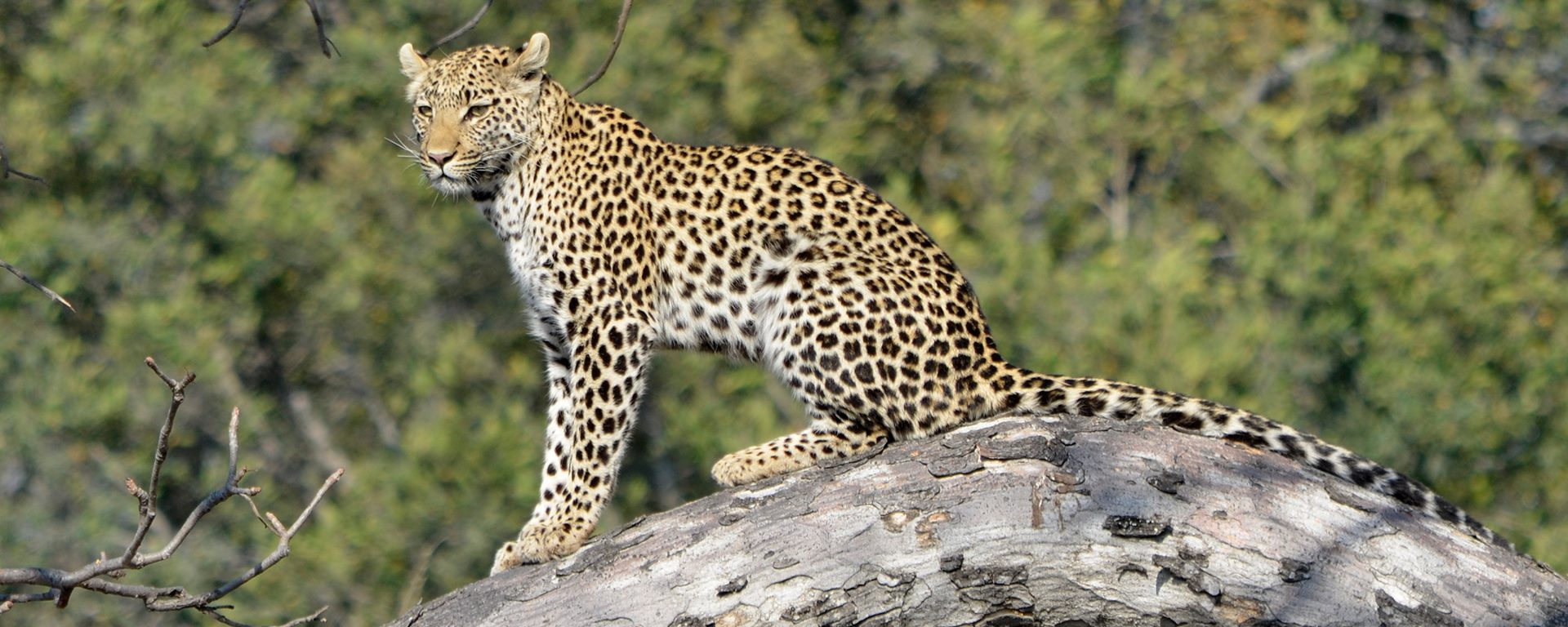
3. South Luangwa – Zambia
Luangwa aficionados are probably still hot under the collar at my assertion that the Kruger National Park’s private reserves are the best place to see leopards. Zambia’s South Luangwa National Park is rumoured to have Africa’s greatest number of these elegant big cats.
A wide and fertile alluvial plain nourished by the Luangwa River, the park’s animals range from aardvark to zebra and it has long been known for its dense concentrations of predators, especially lions and leopards. What it has not been so well known for is its accessibility but in recent years it has become as easy to experience as Africa’s more popular safari destinations. Seasoned safari hands return gushing about the place and if you visit during the late dry season (August to October), you will see wildlife in both staggering numbers and diversity.
How to do it: South Luangwa’s lodges are scattered along the riverbanks or overlook ox-bow lakes, making leopard sightings possible from camp let alone when you head out on game drives. Unusually for a national park, night drives are permitted, and do not skip a walking safari: South Luangwa guides are reckoned to be the best in Africa (there, I said it) and give you the chance to prowl big cat country … on foot.
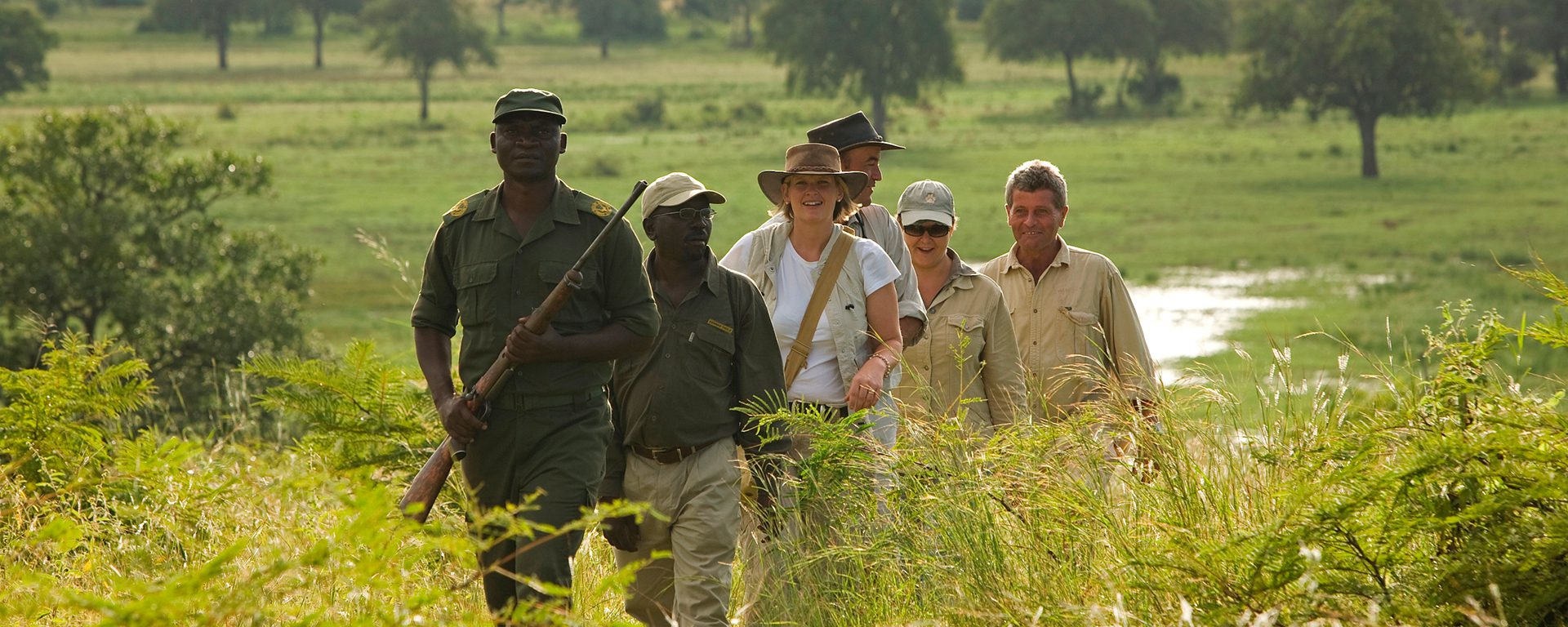
4. Samburu & Masai Mara reserves – Kenya
Images of snorting wildebeest migrations and flamingo-covered lakes are probably first to mind when thinking about Kenya‘s wildlife but the Samburu and Masai Mara National Reserves have reputations for excellent leopard sightings.
You’ll be going a bit off the beaten path at Samburu but it is worth it. An area of arid woodland studded with rocky outcrops and thick riverine bush, it lays claim to the title of the best place in Kenya to see leopards, something fans of the Masai Mara may dispute. Although much of the Mara is open rolling grassland more suited to cheetah, lion and hyena, there is prime leopard habitat along its rivers; it is not for nothing that the reserve and its private conservancies were chosen as the location for the BBC’s Big Cat Diaries.
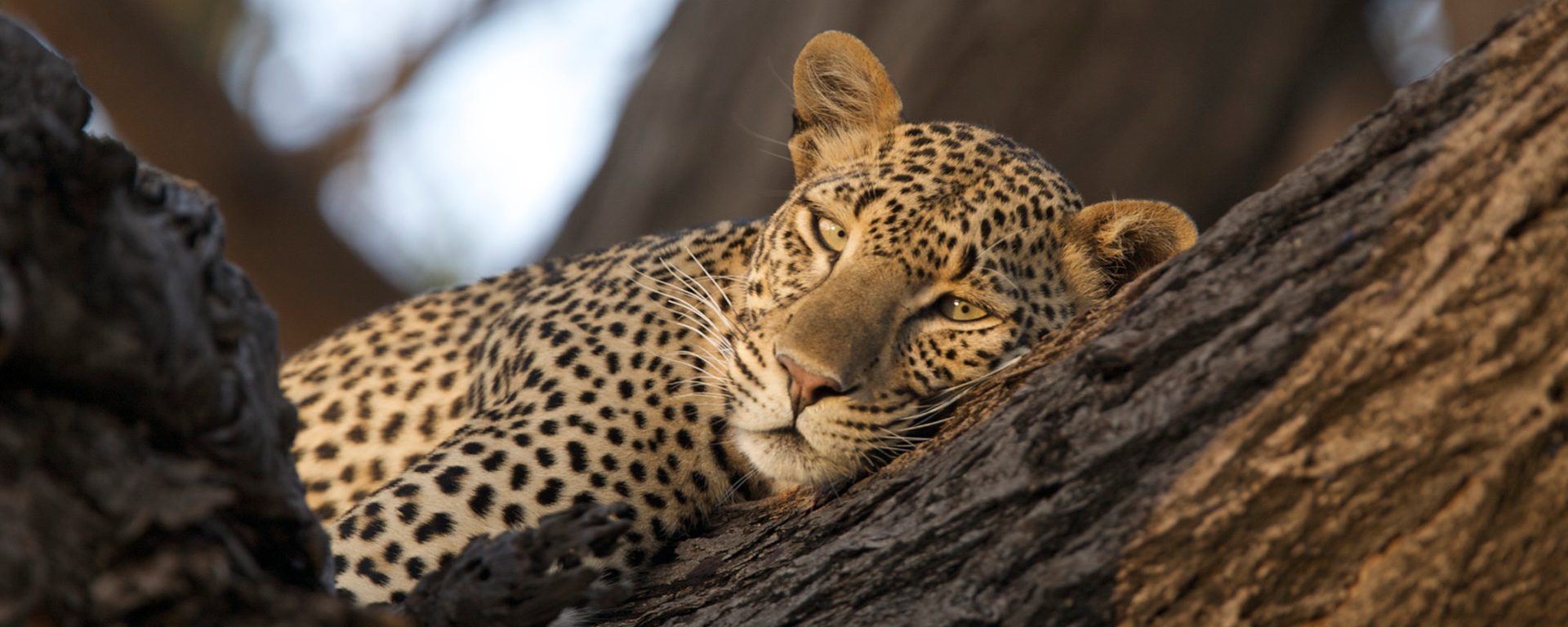
In truth, a leopard sighting cannot be guaranteed anywhere. As a guide in Botswana, I spent countless hours on game drives in prime leopard country. I would scan low tree branches and peer into dense bush until my eyes ached. Nothing. I would sometimes emerge from my tent in the morning, see fresh leopard tracks outside it (always a bit unnerving) and then not see a leopard for months. My best sighting – of a mating pair – was when I was hurtling along a well-used sand road at midday, my mind on lunch and a siesta.
Now, many years later, my memories of game sightings are fading. Photos of lions and elephants are met with puzzled expressions (‘now where was this taken?’) but leopard sightings I remember like they were yesterday. Each one was like falling in love for the first time – and that is no bad thing.

